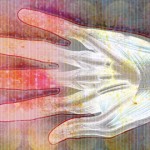The Case
A previously healthy four-year-old female presents with a history of not being able to walk for more than a few minutes and complaining of leg pain when playing. Her parents confirm she has not been willing to play on the floor recently and wants to be carried while out walking. She developed a red rash on her cheeks and knees with occasional fever and irritability. She was seen by her primary care provider and was referred to a pediatric rheumatologist for possible juvenile arthritis. On further questioning, it is discovered that she has been losing weight and has been more irritable.
Her evaluation demonstrated decreased ability to straighten her elbow, fingers, and knees. She has erythema of her metacarpophalangeal joints (MCPs), proximal interphalangeal joints, and knees, as well as on her forehead, cheeks, and chin, with sparing of her nasolabial folds. Telangiectasias are seen on the gum line and in the periungual fingernail region. During your evaluation, she cried when you tried to test muscle strength and she was unwilling or unable to sit on the floor.
You obtain blood tests, which include a normal complete blood count and erythrocyte sedimentation rate, while her aldolase, aspartate aminotransferase, alanine aminotransferase, and lactate dehydrogenase are elevated with a normal creatine kinase. The antinuclear antibody (ANA) is positive and anti-Sm, -RNP, -SSA, and -SSB antibodies are all negative. An MRI of the thigh/knee demonstrates diffuse muscle edema and a normal knee joint.
A muscle biopsy demonstrates diffuse perivascular and perfascicular inflammation, MHC class I upregulation, MAC deposition, and microvascular thrombosis consistent with juvenile dermatomyositis (JDM).
Thus, this child has classic findings of JDM—what would be initial therapy options?
JDM is the most common subset of the juvenile idiopathic inflammatory myopathies (IIM), representing about 85% of the IIM cases in patients aged 16 years or younger.1 The incidence of JDM in the United States is 3.2 per million children per year.2 It is more common in females, with an average age of onset of seven years of age. One-fourth of the patients are less than four years of age at onset.3
Clinical Features of JDM
JDM usually presents as easy fatigability, irritability in a young child, and inability or refusal to perform normal daily activity such as getting up off the floor, climbing stairs, playing, dressing, etc. The onset of muscle weakness is usually insidious and, at times, blamed on behavior issues. There is usually difficulty with and gradually increasing fatigue in activities of daily living, such as combing hair, reaching for highly placed objects, climbing stairs, or getting in or out of bed. The onset of rash, muscle weakness, and fatigability may be months apart or in the same time frame.


